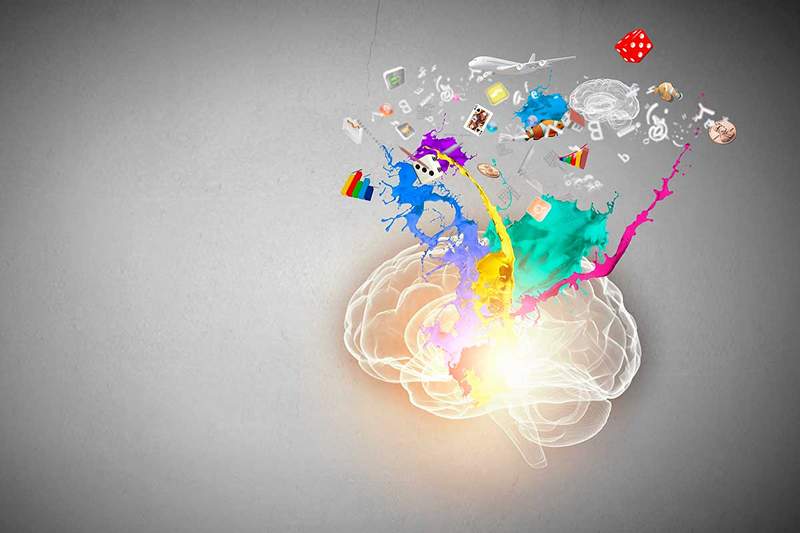What are mnemotenic rules and which are the best techniques

- 697
- 53
- Charles Fay
We still do not know the mechanisms that regulate our memory, but we do know that there are factors that help reinforce memories or act as a switch to help us evoke certain information.
Content
Toggle- What are mnemonic rules?
- Cartoon technique
- Initial technique
- LOCI places or method technique
- Chain technique
- Creative Prayer
- Numerical conversion technique
What are mnemonic rules?
The word "mnemontenia" derives from the Greek mnēmonikós (memory derived), and Téchnee (art). A Mnemonic rule It is a simple system that is used to remember data, names, numbers, etc. relating the sequences that we must memorize with words, images, etc.
These rules are mainly used for students to increase not only their retention capacity, but also their effectiveness when recalling the information retained in memory. Thanks to these simple techniques, the agility and speed with which the memory arises increases considerably, and this in turn has an impact on the academic and personal result.
In 1967 from a study conducted by Gerald R. Miller, it was found that students who regularly used mnemonic rules increased the results of the tests by up to 77%. So, what are you waiting for to put them into practice?
Here are some of the main mnemonic rules so you can start practicing with them.
Cartoon technique
This technique consists in building a story with all the words that we must memorize. All elements to memorize must appear, although order is not important.
For example, imagine that you should memorize the following data:
The Ebro River is the most caudalous river in Spain, it crosses seven Spanish autonomous communities and has a total length of 930 km
Now build a cartoon with the main words. Remember that the foundation is to unite the image with action and emotion, not that the story is especially beautiful or creative.
Maria rode with her horse and stumbled upon a great river that had a lot of water. He was so caudaloso, that not even mounted on his horse could ever cross it. Then he thought if it would be possible to surround him, that's why he asked a pastor who was close to the place. But he replied: "It is impossible to surround it, this river is the longest in the country, measures 930km and crosses 7 different communities".
 The brain mechanism to convert new information into lasting memories
The brain mechanism to convert new information into lasting memories Initial technique
This technique is useful when we have a list of words to remember, we can build a word with the initial of each of them, so that the new word reminds us of how each name of the list begins.
In cases where the order of the list is not relevant, we can try several combinations until the key word is easier to remember.
For example:
- MAgnesio
- TOLuminio
- CObre
- ANDStaño
- Ploin
MACEP
LOCI places or method technique
It consists of associating each of the elements that we must memorize with places or spaces that are familiar to us (for example the kitchen, or the route that we make from home to school, etc.)
For example:
- Mercury: The casserole has the color of Mercury
- Venus: The oil company looks like a statue Venus
- Land: I can't cook with dirty hands of Land
- Mars: In the cold pan the tomato as red as Mars
- Jupiter: The gas that comes when boiling the soup reminds me of Jupiter
- Saturn: The hoops of Saturn They are like those of onions
- Uranus: The fridge is cold as Uranus
- Neptune: The holder looks like the trident of Neptune
Chain technique
It is used to remember words lists in a specific order. What is done is to match two by two words by order. The first with the second, the second with the third, etc. Once the names are matched, we can create a small cartoon that allows us to unite these words.
Proceed as follows:
- The words or concepts that we want to memorize images are reduced. All concepts can be reduced to images (however abstract they may seem).
- The images must be: concrete, different, clear and humorous or comic: because the ridiculous, nice or shocking is better remembered.
- A composite image corresponding to the 1st and 2nd word is formed, where the two come together.
- The images of the 2nd and the 3rd word are joined in the same way, and so on.
- A story is created that allows us to unite all the words.
For example, we must memorize the following in order:
- Wolf
- Phone
- Water
- Socks
The man wolf Heard the call from phone And he went to answer, but stumbled and put his feet in the cube of the water, That is why he enraged, because he had been wet socks.
Creative Prayer
It consists of concentrating, through a word or grouping of them, a meaning or content of a topic.
For example:
MASPICHULA: Nemotechnics to learn the order of evolution insects: Furtherticadores, Picadores, Chupatores and TheMediators.
Numerical conversion technique
This is the Association of Letters with numbers, in this way you can use words or phrases to remember dates, measures, results, phones, distances, formulas, etc.
Example: We want to remember 1914, when World War I started.
1-A
9-I
1-A
4-D
TOLemania Yonvade TO DInamarca
With these classic methods we can more effectively memorize the content of our studies. Although it takes extra time to have to organize the material, perform this work allows our brain to access the memory more quickly. In addition, we will prevent the content learned with so much effort to retain only in the short -term memory, where information only remains for a few minutes or hours, as storage is facilitated in the long -term memory, which will retain the information for days, weeks and even years.
Video about study techniques: mental maps.

